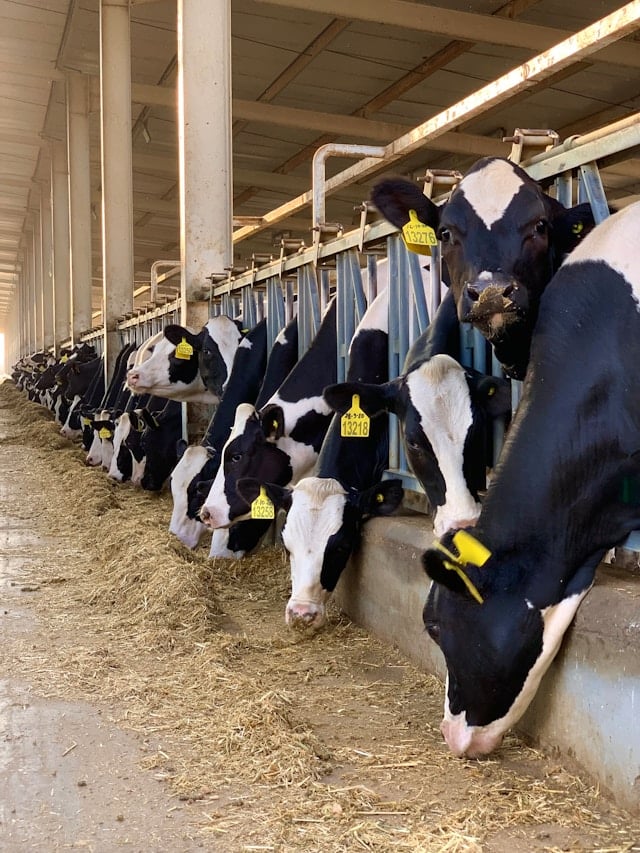In an era where people’s attention is increasingly shifting towards health and sustainability, organic food has emerged as a prominent player in the global market. As consumers become more mindful about their food choices, the demand for organic food has surged, paving the way for many small farms to shift their farming practices and venture into the organic food market. So, what were the key factors that drove a small farm’s transformation into an organic food brand?
Evolution of Farming Practices
Let’s turn back the clock a few years, when conventional farming dominated the agriculture sector. Back then, farmers were heavily reliant on synthetic fertilizers, pesticides, and genetically modified organisms to increase crop yield. However, with time, people became aware of the harmful effects of these practices on their health and the environment.
A lire également : Find out about truck driving jobs in the USA
This shift in consumer perception triggered a transformation in farming practices. Farmers started embracing organic farming – a method of crop and livestock production that involves much more than choosing not to use pesticides, fertilizers, genetically modified organisms, antibiotics, and growth hormones. Organic farming is a holistic approach aimed at enhancing soil health, biodiversity, and ecological balance.
Market Demand for Organic Products
One key factor driving the transformation of traditional farms into organic food brands was the rising market demand for organic products. With increasing health consciousness and environmental awareness, consumers started demanding more organic food, willing to pay a higher price for products grown organically.
Cela peut vous intéresser : What Drove the Success of a Niche Beauty Brand in the Age of Digital Marketing?
As the organic food market started to boom, small farm producers saw an opportunity to cater to this growing demand. Organic food provided them a chance to differentiate themselves in a highly competitive market, offering products that were seen as healthier and environmentally friendly.
The Higher Price of Organic Products
Organic farming involves natural processes that take time, unlike conventional farming methods where chemicals speed up the growth. Additionally, organic certification process is rigorous, necessitating stringent checks and audits. Hence, organic products command a higher price in the market.
The higher price of organic products served as a financial incentive for farmers to switch from conventional farming to organic farming. Despite the fact that organic farming requires a significant upfront investment, the potential returns were attractive enough to convince farmers to make the shift.
The Role of Government Policies and Regulations
Over the years, government policies and regulations have played a crucial role in promoting organic farming. Many governments around the world offered incentives to farmers to encourage them to adopt organic farming practices. These included subsidies, grants, and technical assistance to help farmers transition to organic farming.
These policies and incentives made it easier for small farms to make the transition to organic farming and subsequently, launch their own organic food brands. The support from the government not only helped offset the initial costs but also ensured a market for their organic products.
The Impact on Soil Health and Sustainability
Farmers have a deep connection with the soil they work on. They understand that the health of their crops is directly linked to the health of their soil. Conventional farming methods, while effective at boosting yields, often lead to soil degradation over time.
When farmers began to realize the negative impacts of conventional farming practices on their soil health, they started looking for more sustainable options. Organic farming emerged as a solution, with its emphasis on preserving soil health, biodiversity, and ecological balance. This focus on sustainability added another compelling reason for farmers to transform their small farms into organic food brands.
In essence, the journey of a small farm’s transformation into an organic food brand isn’t just about embracing new farming practices or responding to market demand. It is a synergistic interplay of various factors – the quest for healthier food, the allure of higher market prices, the support of government policies, and the commitment to soil health and sustainability. This transformation reflects a broader shift in societal values, signaling a move towards more sustainable and health-conscious living.
Implementing Organic Farming Techniques
In the heart of the shift from traditional farming techniques to organic farming lies the adoption and implementation of organic farming practices. These practices not only differ drastically from conventional methods but also require a new set of skills and knowledge. Thus, for a small farm to become a certified organic food brand, the journey begins with understanding and implementing organic farming techniques.
Organic farming primarily revolves around enhancing the fertility of the soil naturally. This involves a series of practices such as crop rotation, intercropping, organic waste and residue management, and biological pest control. Organic farmers need to adapt to these practices and replace synthetic fertilizers and pesticides with organic manure and natural pest repellents.
Another crucial element of organic farming is the prohibition of genetically modified organisms (GMOs). Organic farmers must ensure that their crops are not genetically modified and instead foster biodiversity by growing a variety of native and traditional crop species. In livestock farming, the use of growth hormones and antibiotics are strictly forbidden in organic farming. Instead, organic farmers must ensure animal welfare by providing natural feed and maintaining high standards of animal health.
Apart from this, the process of organic certification also necessitates that organic farms maintain a certain distance from conventional farms to prevent cross-contamination from synthetic pesticides or fertilizers. This often means that farms need to be relocated or surrounded by buffer zones, adding another layer of complexity to the transition process.
Overall, the implementation of organic farming practices is a significant step in a small farm’s journey towards becoming an organic food brand. It involves a complete overhaul of traditional practices and an embracement of a more holistic and sustainable approach to agriculture.
Conclusion: Embracing the Organic Revolution
In conclusion, the transformation of a small farm into an organic food brand is a multifaceted process influenced by several key factors. The rising consumer demand for organic food, coupled with the higher price of organic products, provides a strong financial incentive for small farms to adopt organic farming practices. Government policies and regulations also play a key role by providing incentives and support to ease the transition.
Beyond these factors, the shift to organic farming is fundamentally about embracing a more sustainable, health-conscious approach to food production. Organic farmers are pioneers in their own right, leading the way towards a more sustainable future and playing a part in the preservation of soil health, biodiversity, and ecological balance.
This transformation reflects a fundamental shift in societal values, as more and more people are beginning to recognize the importance of sustainable, health-conscious living. The rise of organic food brands is a testament to the growing consciousness among consumers about the food they consume and the impact their choices have on the environment.
The journey of a small farm’s transformation into an organic food brand is not an easy one. It requires significant investment, unwavering commitment, and a willingness to change. Yet, it is a journey that holds immense potential – not just in terms of financial returns, but also in contributing towards a healthier, more sustainable world.











